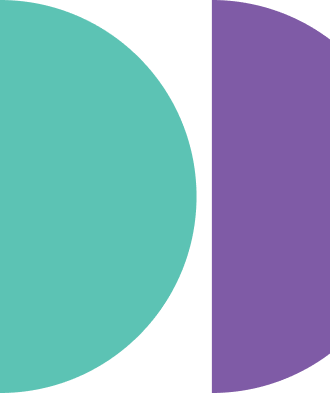New Years means that we get to start over and commit to doing better. For us, we’re constantly striving to think less about ourselves and more about the user.
As user experience designers, it’s part of our process to constantly ask what and for whom we’re designing for. While we may be users of our own products, it’s important to remember that we shouldn’t be designing for ourselves. Enter the user persona––for the user.
What is a user persona?
A user persona is a hypothetical archetype of an actual or ideal user. Persona modeling is the act of taking the average user of your product and creating a model (hence the term) to help guide decisions. They are a common tool used in everyday practice, but more importantly, they help designers to create a powerful and meaningful digital experience that users can understand and enjoy.

User personas help to create a powerful and meaningful
digital experience. An example from aequilibrium.com.
User personas are based on key user insights and created by analyzing data, expectations, needs, goals, and behavior patterns of existing or similar product users. The strategy of developing user personas was originally developed by software inventor and architectural consultant Alan Cooper. In his essay, The Origins of Personas, Cooper explains his first encounter with personas during his 1983 program, Plan*It. By employing a process of interviewing colleagues and acquaintances who were likely candidates to use his program, he uncovered the “unusual power and effectiveness” of the “practical interaction design tool” and created a process (persona modeling) for designers to use internationally to this day.
Why are user personas important?
User personas are important because they help us to understand our users. By understanding our users, we’re able to know who we’re designing our products and experiences for and invariably what kind of product and experience to design.
User personas can help uncover not only what users do, but also what they don’t do, which is just as important. Imagine designing a product and finding out after it’s built that it’s obsolete before it hits the market because the main function designed doesn’t correspond with real user behavior.
If you think about what good user experience really means, you’ll be able to see the connections between expectations and pathways in design and the role that user personas have in the overall design process.
How to create a user persona
There are many ways to go about creating a user persona. To get started, let’s begin with Cooper’s classic distinction wherein he describes user personas as a narrative that describes the flow of someone’s day, as well as their skills, attitudes, environment, and goals (Cooper, 2008). The notion of a narrative is interesting because it differentiates a list of tasks and details from a story.

User personas are narratives that describe the flow
of someone’s day. An example from aequilibrium.com.
Be creative
One way to go about creating a narrative-based user persona is to write fiction. Himanshu Khanna compares his process to writing fiction and asks questions during his discovery such as, Who is the protagonist? What’s their background, lifestyle, personality and aspirations? Who are the protagonist’s supporters? What is their relation with the protagonist?
Another way to go about creating a user persona is to think about it as a social networking profile and include information and details that are concise and relevant to the space. Cooper warns, however, that while personal details can be fun, it’s important to remember to focus on the workflow and behavior patterns first.
Talk to people
Remember that user personas are created as an average of all your users. There are several ways to gather information about your users in your data collection process. Interviews, surveys, observation, and “shadowing” are a few ways to consider. Learn more how to ask UX questions here.
Groups you can talk to include your support and sales teams. As members of the frontline, they understand your users better than anyone can tell you everything your users are looking for. You can also talk to your users directly, who is actually your most valuable source of information.
Amy Rogers also encourages you to look at your competitors. Study the current market, identify themes and pain points, and use all of this as evidence when creating your personas. Data analytics will also provide insights into your current products and users.
Pay attention to goals and frustrations
Identifying the right goals and frustrations is perhaps the most important part of creating a user persona. While you can include a lot of information about your users’ habits and behaviors, when it comes to goals and frustrations, Cooper suggests including three or four of each to help focus the design. Pay close attention to when it’s more valuable to share life goals or experience goals, and think about what the user really wants to accomplish as well as the challenges they are currently facing.
Most importantly
Every user experience is different and so no matter how you end up creating your user persona, keep in mind that personas should always be specific to the product experience that you are designing for.
Assembling a set of user characteristics is easy while creating personas that are truly effective are much harder to do. UX designers must deeply understand their product and user base and think carefully about the personas they will use throughout the lifecycle of their digital products. Only then can we create powerful and meaningful digital experiences that users can understand and enjoy.





